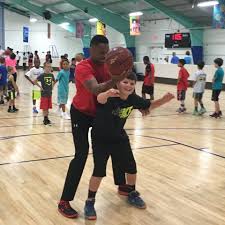5 Tips for Selecting the Best Basketball Camps for Your Child
Basketball is on the rebound in Australia. Australia is no stranger to basketball, with the first game in the country recorded in 1897 –only six years after the invention of the sport by Canadian James Naismith. However, the sport would not go into the forefront of the national consciousness until Luc Longley made it into the National Basketball Association, playing for Minnesota Timberwolves in 1991 and later with the Chicago Bulls where he became the first Australian to win an NBA championship as part of the 1996 Chicago Bulls.

While the sport’s popularity in Australia did somewhat ebb in the 2000s, it’s experienced a resurge in popularity due to the current prevalence of playing styles and strategies more suited for Australian players as well as a larger worldwide trend where basketball has seen unprecedented popularity outside of North America.
Today, more Australians are in the NBA than ever before, further sparking the imagination of children all over the country and leading to the proliferation of basketball camps throughout Australia.
However, not every basketball camp is the same. You have regular camps and others that are more of a school holiday basketball camp setup. There are camps that are available seasonally as well as those that are open year-round.
Different camps may also have their own unique approaches that may not be suited for the temperaments of different children. Actual access to a desired camp can also be an issue. Basketball camps Melbourne parents have immediate access to may also be markedly different from those available in Perth, Sydney, or Brisbane.
But supposing you do find what seems to be a suitable program that’s a short commute or drive from your location, what then? Here we have a few pointers that will help narrow down your choices and ensure that your child gets the type of basketball education they need.
1.) Check the program’s accreditation
Try to look into any claims the program may have of licensing and other types of accreditation. This can help confirm if the program is indeed legitimate and if the instructors are truly qualified to instruct children.
2.) Look into the program’s passing and retention rates
A basketball camp with extremely high or low retention and passing rates can be a good or bad thing, depending on their claims or your child’s expectations. Higher retention rates usually mean that a camp is “easier”, enjoyable, or not as serious as one with lower rates. Extremely low rates can mean that there might be something wrong with the methodology employed by the camp.
Of course, this has to be all taken in context. Serious basketball camps that are meant for children who enjoy a challenge should be considered differently from camps that are only meant to be an introduction to basketball.
In any case, be sure to talk to your child to understand their expectations before you let them sign up for a specific camp.
3.) A favourable instructor-to-student ratio
Generally speaking, you want as few children per instructor as possible. Children tend to learn better when the instructors or coaches are not handling too many campers at once. Of course, adding instructors may increase the cost of a program, so you may want to try for a happy medium.
4.) Your child should be interested in the program
Basketball camps, like any other program, can represent a significant commitment, especially for your child. They may resent being sent off to a program they have no interest in or one that does not give them the type of stimulation they need. Talking to your child about the pros and cons of each basketball camp and giving them time to make a decision can lead to a much better experience for everyone.
5.) Check out reviews by other parents
If a basketball camp has been operating for a while, chances are good that parents will have left some feedback on the program’s website, their social media pages, or a third party review site. Try to seek out critical and negative reviews first, then weigh them against the positive ones.
A few negative reviews don’t really mean much, because people with bad experiences are much more likely to express them than people with neutral or positive ones. Instead, try to look for patterns and read between the lines to see if there may be anything that may cause concern.









